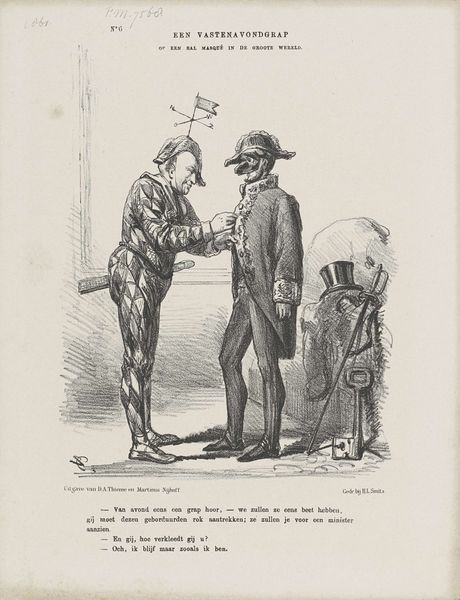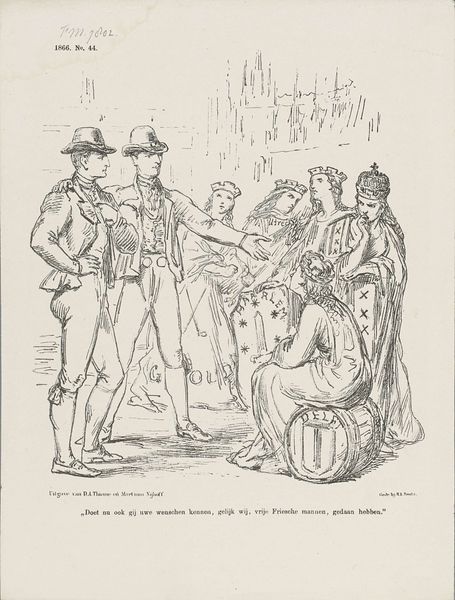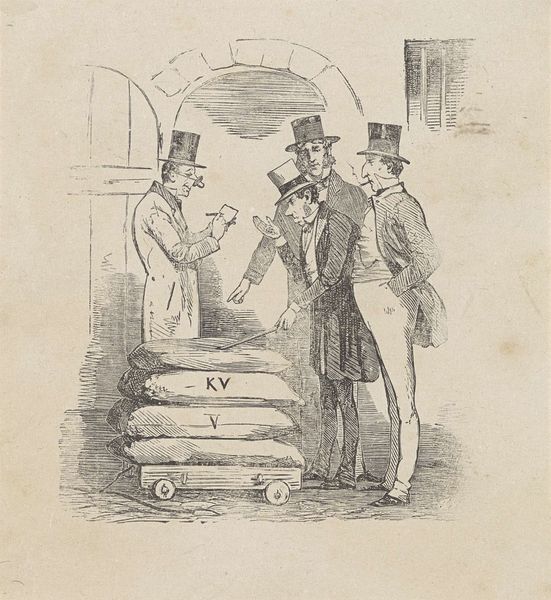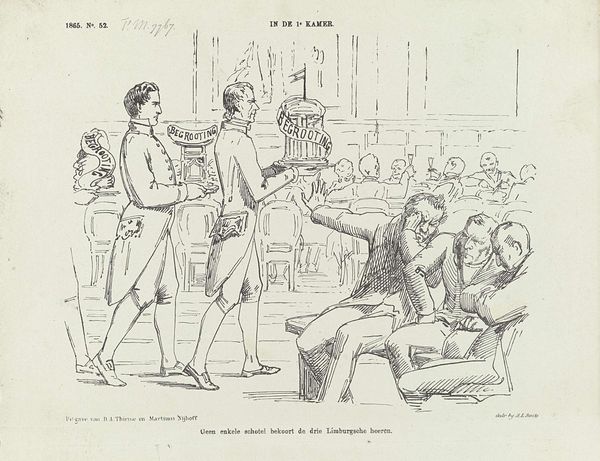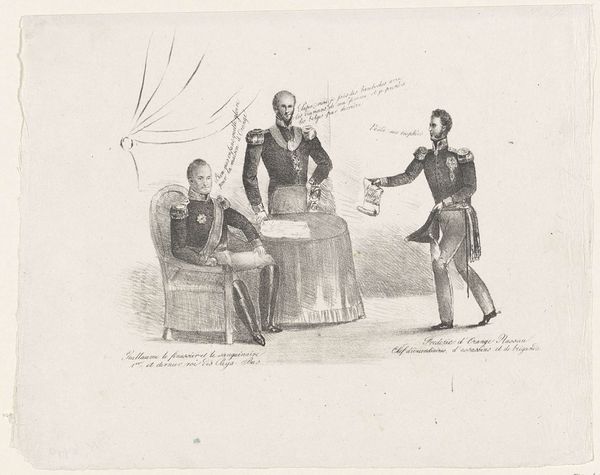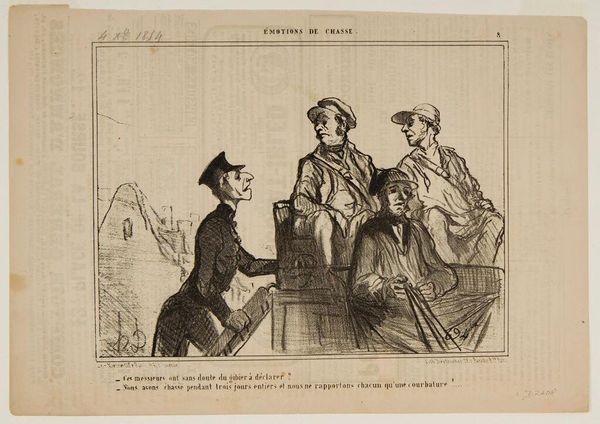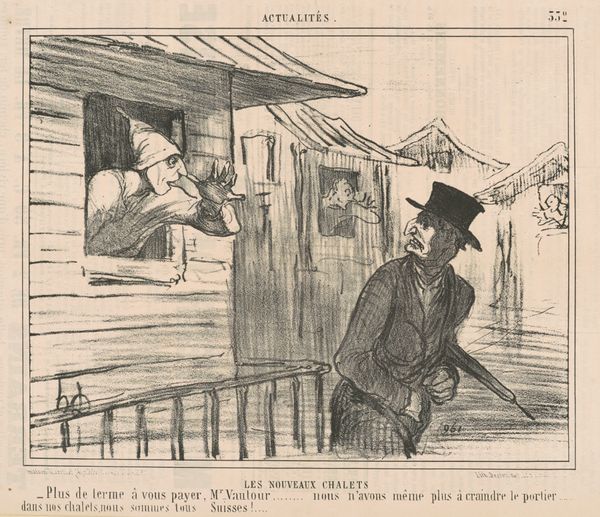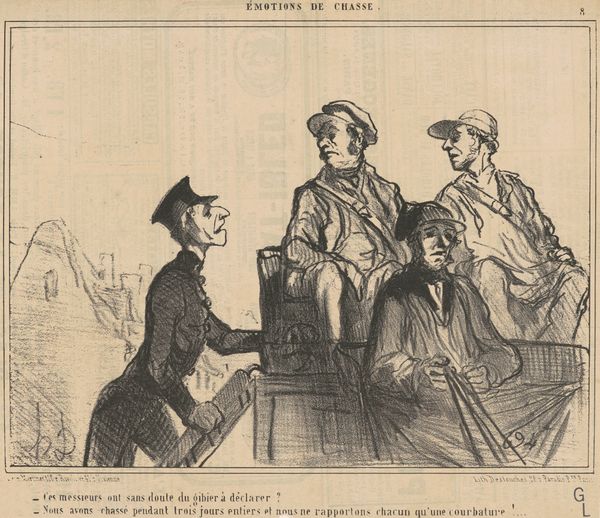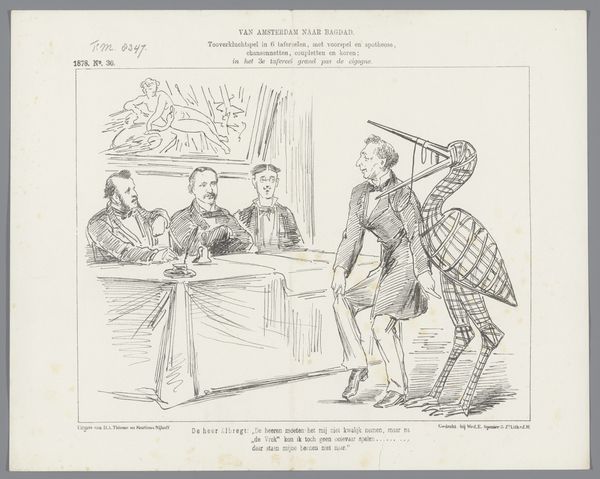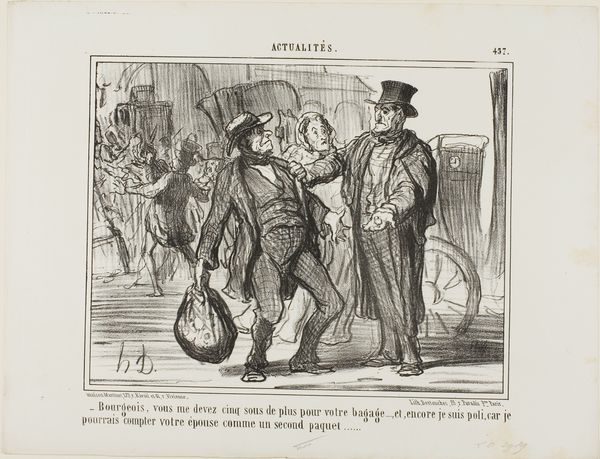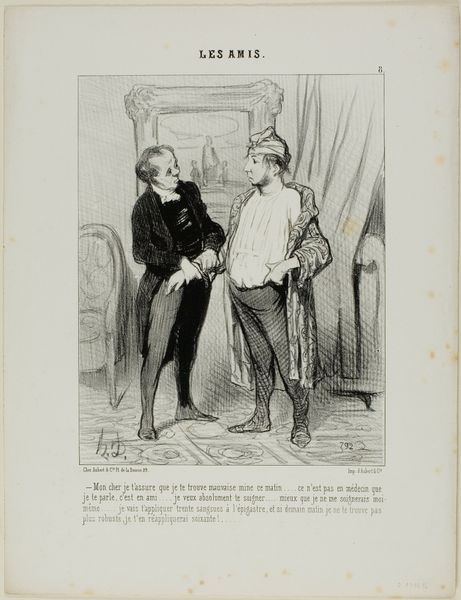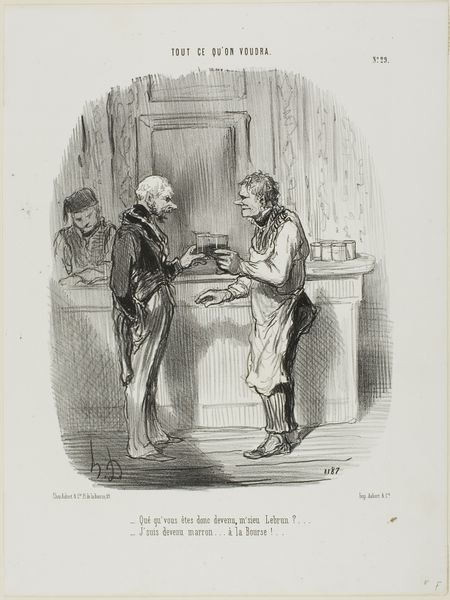
graphic-art, lithograph, print
#
graphic-art
#
comic strip sketch
#
imaginative character sketch
#
quirky sketch
#
narrative-art
#
lithograph
# print
#
caricature
#
sketch book
#
figuration
#
personal sketchbook
#
idea generation sketch
#
sketchwork
#
comic
#
line
#
sketchbook drawing
#
history-painting
#
storyboard and sketchbook work
#
sketchbook art
Dimensions: height 215 mm, width 275 mm
Copyright: Rijks Museum: Open Domain
Curator: This lithograph, dating back to 1862, is entitled "Spotprent op de nieuwe Amerikaanse oorlogsschepen," which translates to "Cartoon on the New American Warships." Editor: It immediately strikes me as unsettling. The caricatured figures, the grim expressions… the atmosphere seems incredibly tense, wouldn't you agree? Curator: Precisely. Let’s focus on the compositional elements first. Notice the central placement of the stall vendor offering the toy warships. His gaze seems fixed, almost menacing, as he presents these instruments of war. There's a clear spatial arrangement designed to guide our eyes, setting him as the main fulcrum of this interaction. Editor: It’s a loaded offering, wouldn’t you say? Considering the backdrop, which is strewn with stars seemingly alluding to the American flag, and what appears to be an enslaved child on the left paired with a sign reading, “Katoen Fab,” this piece becomes overtly symbolic of the economic and human costs of the Civil War. It depicts an apparent critique on Northern profiteering by focusing on sales of Cotton and weaponization of the South by trading. Curator: Absolutely. The formal lines, so stark and almost brutal, underscore the severity of the situation. This lithograph presents such a distinct contrast in textures and tonalities within the shading. It draws us in to reflect. Editor: And those toy ships themselves! "Monitor" and "Merrimac" are printed on the sides; they seem to represent how detached individuals in power are during war because they can look at the same scene with an alternative perspective based on their social or economic class. A dark, cynical view that conflicts may benefit someone's individual gain despite social inequality. Curator: Yes. This print serves as a powerful case study. The stark lines forming this critique act as potent vehicles for delivering sharp societal observations, demonstrating the impact of the artist's deliberate approach. Editor: Well, by examining its symbolic depth and starkness, it evokes much. You understand how visual language, symbols, and satire, are intricately interwoven, carrying cultural memory across time. This artwork seems less about aesthetics and more about a critical reflection, reminding us of past events through art and a sense of self. Curator: Agreed. Its lasting message clearly highlights how potent artistry is as a critical tool, even in periods of immense tension.
Comments
No comments
Be the first to comment and join the conversation on the ultimate creative platform.
